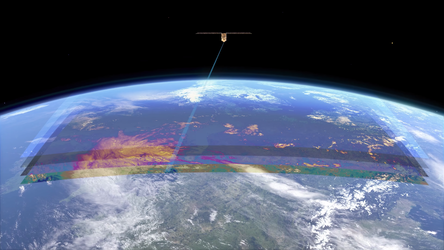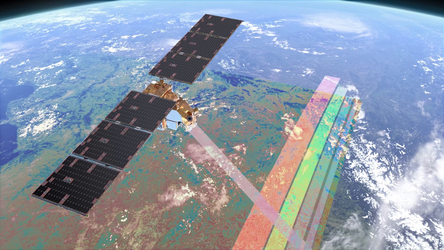
Arctic Weather Satellite revealed
ESA’s Arctic Weather Satellite is designed to show how a potential polar-orbiting constellation of satellites could provide data for very short-term weather forecasts and nowcasts in the Arctic, a region that lacks these kind of forecasts. Importantly, the constellation would also allow for more accurate forecasting around the world.
To do this, the satellite carries a 19-channel cross-track scanning microwave radiometer, consisting of a rotating antenna that focus incoming radiation onto four feedhorns (one for each group of channels) and four receivers, covering the frequency range 50–325 GHz.
The different feedhorns point to a slightly different point on ground, which is re-mapped in on-ground processing. The radiometer antenna scans at continuous speed of around 45 RPM.






